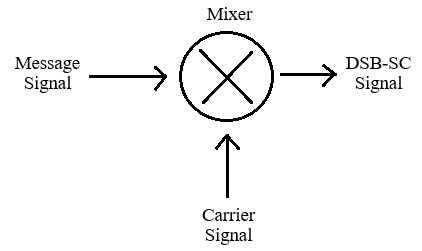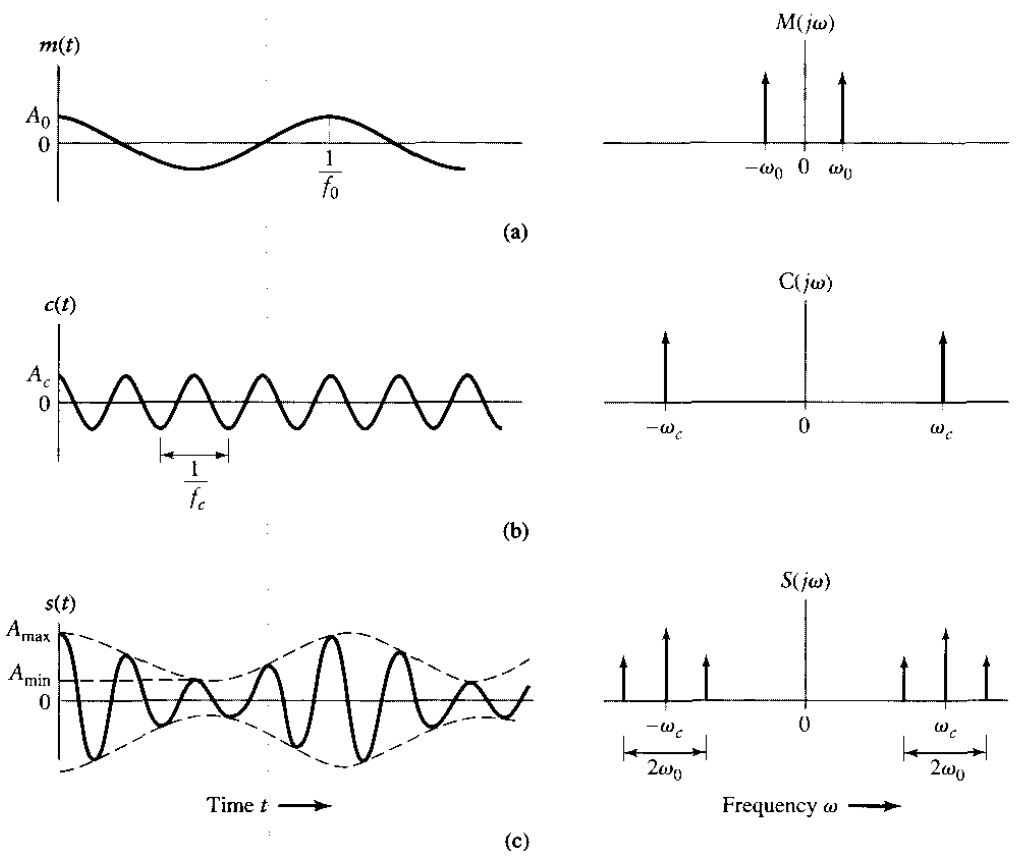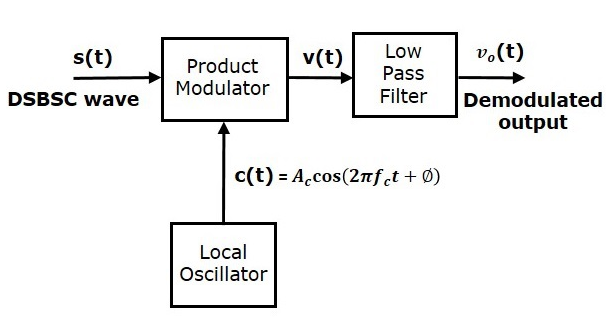DSB-SC, SSB-SC Modulator & Detector
DSB-SC Modulation
Theory
Double Sideband Suppressed Carrier (DSB-SC) modulation is a type of amplitude modulation where only the sidebands are transmitted, and the carrier signal is suppressed. This method is more power-efficient compared to standard amplitude modulation (AM), as it eliminates the carrier, which does not carry useful information.
Mathematical Representation
The DSB-SC modulated signal \( s(t) \) can be expressed as:
\( s(t) = A_c m(t) \cos(2\pi f_c t) \)
Where:
- \( A_c \) is the amplitude of the carrier signal.
- \( m(t) \) is the baseband (modulating) signal.
- \( f_c \) is the frequency of the carrier signal.
In DSB-SC modulation, the carrier signal \( \cos(2\pi f_c t) \) is multiplied by the modulating signal \( m(t) \), resulting in the modulated signal \( S(t) \). The key characteristic of DSB-SC is that the carrier \( A_c \cos(2\pi f_c t) \) is not transmitted. Instead, only the sidebands generated by the multiplication of \( m(t) \) and \( \cos(2\pi f_c t) \) are transmitted.
Block Diagram

Fig 1: DSB-SC Modulation
Frequency Domain Description
The frequency-domain representation \( S(j\omega) \) of the DSB-SC signal is:
\( S(j\omega) = \frac{1}{2} \left[ M(j(\omega - \omega_c)) + M(j(\omega + \omega_c)) \right] \)
- Where, \( S(j\omega) \) is the fourier transform of the modulated wave s(t).
- Where, \( M(j\omega) \) is the fourier transform of the message signal m(t).
- The message spectrum \( M(j\omega) \) is shifted to center around \( \pm \omega_c \).
- Both upper sideband (USB) and lower sideband (LSB) are present.
- The carrier component is suppressed.

Fig 2: Time-domain (on the left) and frequency-domain (on the right) characteristics of DSB-SC modulation produced by a sinusoidal modulating wave. (a) Modulating wave. (b) Carrier wave. (c) DSB-SC modulated wave.
DSB-SC Demodulation
DSBSC Demodulation :
Recovering the message signal from the demodulated signal is
performed coherently. That is, the demodulated signal is multiplied
by a high-frequency sinusoid in perfect synchronization (in phase
and frequency) with the incoming carrier.
This requirement poses a challenge on the design of the demodulator
circuit, as it would then require a part for carrier-recovery.
Failing to accomplish perfect synchronization will result in phase
mismatch or frequency mismatch, leading to some form of distortion
in the recovered signal.
Multiplying the modulated signal with a local carrier will produce a
baseband signal as well as a signal modulated at double the carrier
frequency. Therefore, a LPF is needed at the far end of the
demodulator to recover the baseband signal .
Block Diagram

Fig 3: DSB-SC Demodulation
